

NANOFIL-100
NanoFil 100 µL Syringe
- Overview
- Specifications
- Accessories
- Citations
- Related Products
Overview
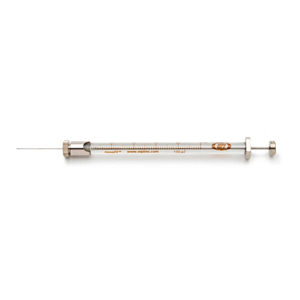
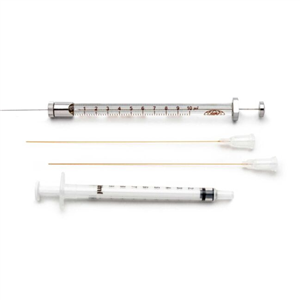
There are 2 images available to view - click to enlarge and scroll through the product gallery.
Data Sheet
/ Download as PDF
Instruction Manual
/ Download as PDF
- World's smallest dead volume injection syringe
- Use with WPI needles 33-36g
- Fits UMP3 microinjection pump
NanoFil™ is a specially designed microliter syringe developed for improved microinjection in mice and other small animals.
The interchangable needles advance directly into the syringe barrel, creating a 1:1 connection with the plunger — a truly gas-tight system built for low-volume sample control.
Benefits
- Very low dead volume injections
- Biologically compatible injection syringe (All the seals are constructed of inert materials for better chemical and biological compatiblity)
- Switching the syringe tip during an experiment is easy
- Variety of injection tips
- Unique tri-beveled needles for easier penetration
- No oil backfilling necessary - In traditional nanoliter injection, the dead volume of the syringe and needle is backfilled with oil as a displacement transfer. This makes the process messy and risks contamination of the injected sample. NanoFil's low volume, flexible tubing eliminates the need for oil. Injection is now simpler, and less messy, and there is no possibility of oil contamination in critical applications such as ophthalmology research (please see the Retinal Pigment Epithelial (RPE) and Intra Ocular (IO) injection kits.
How it works
When the inner diameter of the tip on a conventional syringe is reduced to less than 100 micron, it is very difficult to back fill the solution at a reasonable speed. NanoFil solves this problem by using a tip coupling mechanism that makes it possible to change the syringe tip during the experiment. It makes quantitative nanoliter injection much easier and more accurate than any other method currently in use.
What's Included
The NANOFIL-100 includes a 100 µL syringe and to aid with filling, a 26 gauge needle.
Use with NanoFil Injection Needles (sold separately).
NanoFil Injection Needles
Specially designed tips as small as 36 gauge (110 micron OD) are offered in both blunt and beveled styles. Our studies have shown that these tips will cause less trauma to the tissue than any other form of micro syringe currently in use. NanoFil has a unique coupling mechanism that allows many different forms of small tubing and tips to be coupled with the syringe barrel.
NOTE: With a 26g needle, the Nanofil 100µl syringe is ideal for CFA (Complete Freunds Adjuvant) injection applications.
How to Front Fill a Nanofil Syringe Using MicroFil
Specifications
Accessories
NF33-36BV
Beveled NanoFil Needle Assortment Pack 4/pk
- Includes one each of 33, 34, ...
NF33-36BL
Blunt NanoFil Needle Assortment Pack 4/pk
- Includes one each of 33, 34, 35...
Citations
Adelson, JD, RW Sapp, and BK Brott. 2014. “Developmental Sculpting of Intracortical Circuits by MHC Class I H2-Db and H2-Kb.” Cerebral …. https://cercor.oxfordjournals.org/content/early/2014/10/14/cercor.bhu243.short (April 8, 2015).
Ameri, H, H Liu, and R Liu. 2014. “TWEAK/Fn14 Pathway Is a Novel Mediator of Retinal Neovascularization.” … ophthalmology & visual …. https://www.iovs.org/content/55/2/801.short (April 8, 2015).
Cai, X, S Seal, and JF McGinnis. 2014. “Sustained Inhibition of Neovascularization in Vldlr−/− Mice Following Intravitreal Injection of Cerium Oxide Nanoparticles and the Role of the ASK1-P38/JNK-NF-κB.” Biomaterials. https://www.sciencedirect.com/science/article/pii/S0142961213012520 (April 8, 2015).
Crittenden, JR, CJ Lacey, and T Lee. 2014. “Severe Drug-Induced Repetitive Behaviors and Striatal Overexpression of VAChT in ChAT-ChR2-EYFP BAC Transgenic Mice.” Frontiers in neural …. https://www.ncbi.nlm.nih.gov/pmc/articles/PMC4036131/ (April 8, 2015).
Dai, D, R Kadirvel, and I Rezek. 2015. “Elastase-Induced Intracranial Dolichoectasia Model in Mice.” …. https://pdfs.journals.lww.com/neurosurgery/9000/00000/Elastase_Induced_Intracranial_Dolichoectasia_Model.97868.pdf (April 8, 2015).
Deisseroth, K, and RD Airan. 2014. “Cell Line, System and Method for Optical Control of Secondary Messengers.” US Patent 8,729,040. https://www.google.com/patents/US8729040 (April 8, 2015).
Delotterie, DF, and C Mathis. 2015. “Touchscreen Tasks in Mice to Demonstrate Differences between Hippocampal and Striatal Functions.” Neurobiology of learning …. https://www.sciencedirect.com/science/article/pii/S1074742715000313 (April 8, 2015).
Formaglio, P, J Tavares, R Ménard, and R Amino. 2014. “Loss of Host Cell Plasma Membrane Integrity Following Cell Traversal by Plasmodium Sporozoites in the Skin.” Parasitology international. https://www.sciencedirect.com/science/article/pii/S1383576913001104 (April 8, 2015).
Han, Z, MJ Banworth, and R Makkia. 2015. “Genomic DNA Nanoparticles Rescue Rhodopsin-Associated Retinitis Pigmentosa Phenotype.” The FASEB Journal. https://www.fasebj.org/content/early/2015/02/23/fj.15-270363.abstract (April 8, 2015).
Havekes, R, and VM Bruinenberg. 2014. “Transiently Increasing cAMP Levels Selectively in Hippocampal Excitatory Neurons during Sleep Deprivation Prevents Memory Deficits Caused by Sleep Loss.” The Journal of …. https://www.jneurosci.org/content/34/47/15715.short (April 8, 2015).
Höglinger, GU, and O Arias-Carrión. 2014. “Origin of the Dopaminergic Innervation of Adult Neurogenic Areas.” Journal of …. https://onlinelibrary.wiley.com/doi/10.1002/cne.23537/full (April 8, 2015).
Hollis, ER, N Ishiko, and K Tolentino. 2015. “A Novel and Robust Conditioning Lesion Induced by Ethidium Bromide.” Experimental …. https://www.sciencedirect.com/science/article/pii/S0014488614003896 (April 8, 2015).
Horn, CC, K Meyers, and A Lim. 2014. “Delineation of Vagal Emetic Pathways: Intragastric Copper Sulfate-Induced Emesis and Viral Tract Tracing in Musk Shrews.” American Journal of …. https://ajpregu.physiology.org/content/306/5/R341.abstract (April 8, 2015).
Kim, J, and CJ Matney. 2014. “Layer 6 Corticothalamic Neurons Activate a Cortical Output Layer, Layer 5a.” The Journal of …. https://www.jneurosci.org/content/34/29/9656.short (April 8, 2015).
Kwon, S, GD Agollah, G Wu, and EM Sevick-Muraca. 2014. “Spatio-Temporal Changes of Lymphatic Contractility and Drainage Patterns Following Lymphadenectomy in Mice.” PloS one. https://dx.plos.org/10.1371/journal.pone.0106034.g009 (April 8, 2015).
Lim, TKY, XQ Shi, HC Martin, and H Huang. 2014. “Blood-Nerve Barrier Dysfunction Contributes to the Generation of Neuropathic Pain and Allows Targeting of Injured Nerves for Pain Relief.” PAIN®. https://www.sciencedirect.com/science/article/pii/S0304395914000475 (April 8, 2015).
Mac-Daniel, L, and MR Buckwalter. 2014. “Local Immune Response to Injection of Plasmodium Sporozoites into the Skin.” The Journal of …. https://www.jimmunol.org/content/193/3/1246.short (April 8, 2015).
Mao, CA, H Li, and Z Zhang. 2014. “T-Box Transcription Regulator Tbr2 Is Essential for the Formation and Maintenance of Opn4/Melanopsin-Expressing Intrinsically Photosensitive Retinal Ganglion Cells.” The Journal of …. https://www.jneurosci.org/content/34/39/13083.short (April 8, 2015).
Matsuda, T. 2015. “Electroporation in the Rodent Retina In Vivo and In Vitro.” Electroporation Methods in Neuroscience. https://link.springer.com/protocol/10.1007/978-1-4939-2459-2_4 (April 8, 2015).
Matsumoto, H, K Kataoka, and P Tsoka. 2014. “Strain Difference in Photoreceptor Cell Death After Retinal Detachment in Mice.” … ophthalmology & visual …. https://www.iovs.org/content/55/7/4165.short (April 8, 2015).
Mittelman-Smith, MA. 2015. “Neurokinin 3 Receptor-Expressing Neurons in the Median Preoptic Nucleus Modulate Heat-Dissipation Effectors in the Female Rat.” …. https://press.endocrine.org/doi/abs/10.1210/en.2014-1974 (April 8, 2015).
Park, CY, EH Zhou, D Tambe, and B Chen. 2014. “High-Throughput Screening for Modulators of Cellular Contractile Force.” arXiv preprint arXiv: …. https://arxiv.org/abs/1411.5695 (April 8, 2015).
Puccini, JM, and DF Marker. 2015. “Leucine-Rich Repeat Kinase 2 Modulates Neuroinflammation and Neurotoxicity in Models of Human Immunodeficiency Virus 1-Associated Neurocognitive Disorders.” The Journal of …. https://www.jneurosci.org/content/35/13/5271.short (April 8, 2015).
Rangel, A, B Race, and K Phillips. 2014. “Distinct Patterns of Spread of Prion Infection in Brains of Mice Expressing Anchorless or Anchored Forms of Prion Protein.” Acta …. https://www.biomedcentral.com/content/pdf/2051-5960-2-8.pdf (April 8, 2015).
Rossmiller, BP, RC Ryals, and AS Lewin. 2015. “Gene Therapy to Rescue Retinal Degeneration Caused by Mutations in Rhodopsin.” Rhodopsin: Methods and Protocols. https://link.springer.com/protocol/10.1007/978-1-4939-2330-4_25 (April 8, 2015).
Swaminathan, SS, DJ Oh, and MH Kang. 2014. “TGF-β2–Mediated Ocular Hypertension Is Attenuated in SPARC-Null Mice.” … ophthalmology & visual …. https://www.iovs.org/content/55/7/4084.short (April 8, 2015).
Tokunaga, CC, KP Mitton, and W Dailey. 2014. “Effects of Anti-VEGF Treatment on the Recovery of the Developing Retina Following Oxygen-Induced Retinopathy.” … ophthalmology & visual …. https://www.iovs.org/content/55/3/1884.short (April 8, 2015).
Yamaguchi, T, J Qi, and HL Wang. 2015. “Glutamatergic and Dopaminergic Neurons in the Mouse Ventral Tegmental Area.” European Journal of …. https://onlinelibrary.wiley.com/doi/10.1111/ejn.12818/full (April 8, 2015).



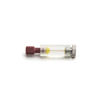
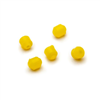








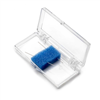
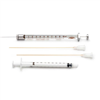



Request
Catalogue
Chat
Print